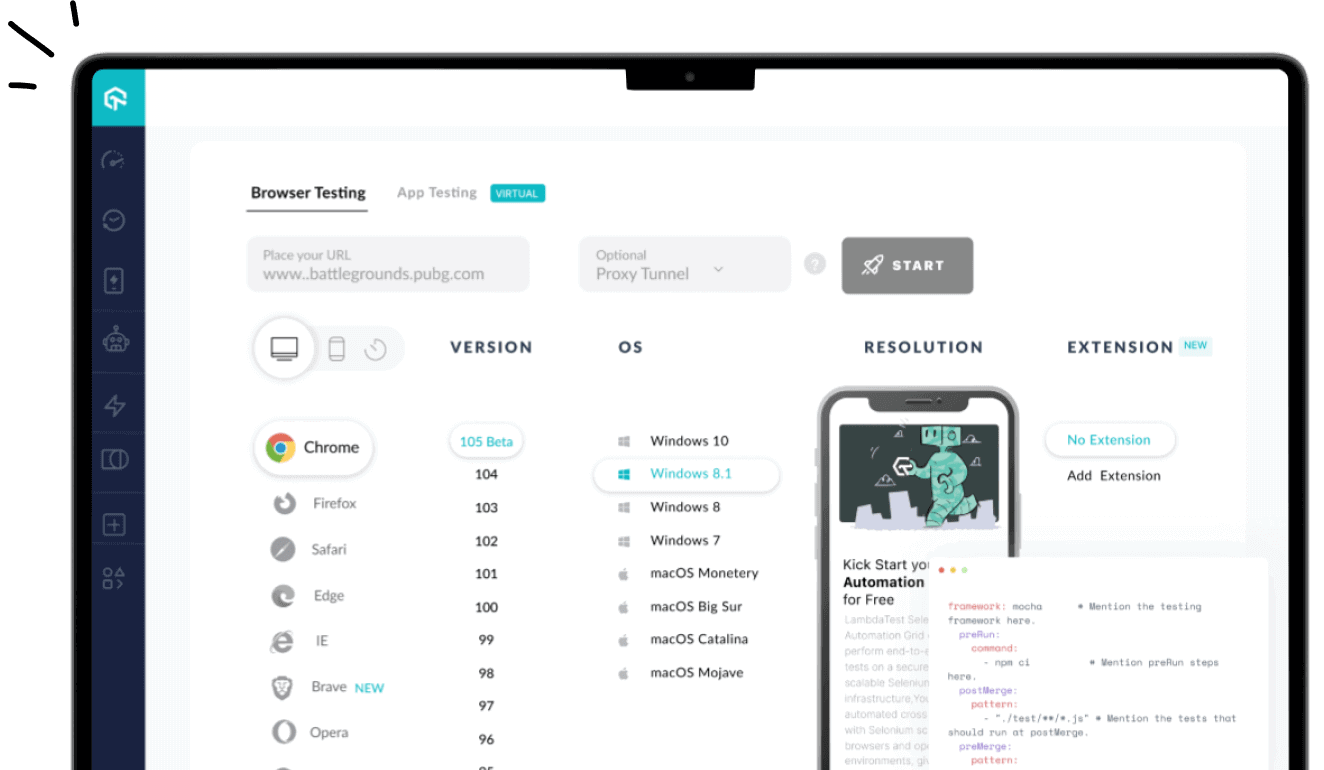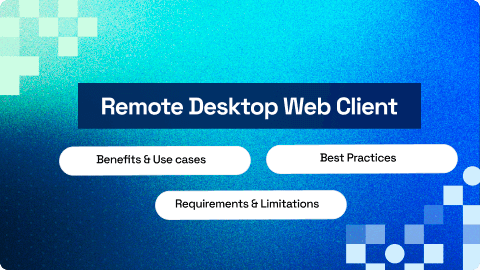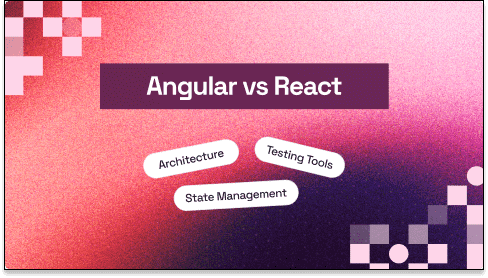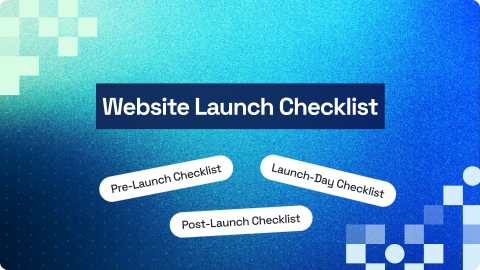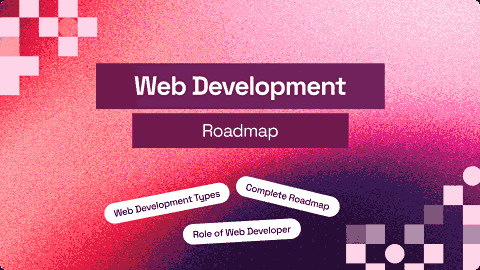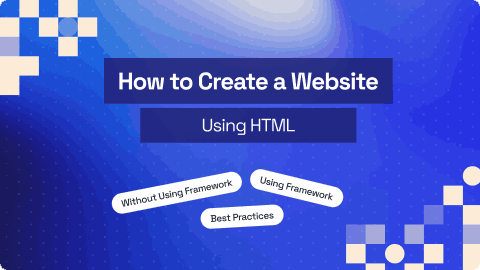Product Launch Checklist: Ensuring Quality & Success from Start to Finish
Poornima Pandey
Posted On: October 1, 2025
13 Min
Launching a product can seem like a big task with many things to keep track of. A simple product launch checklist makes it easier by breaking down the key steps you need to take. With this checklist, you can stay organized, ensure nothing is missed, and set your product up for a successful launch.
Overview
A product launch checklist is a structured guide that helps streamline the process of bringing a new product to market. It ensures that all critical steps are covered, from pre-launch preparations to post-launch monitoring, ensuring a smooth and successful introduction.
Types of AI in Product Launch
Key details about AI in product launches:
- AI-powered Test Automation: Automates repetitive testing tasks and speeds up test cycles.
- Predictive AI Insights: Analyzes data to predict potential issues before they arise.
- AI-driven Orchestration: Orchestrates test environments and automates workflows for more efficient testing.
- Continuous Monitoring: Uses AI to monitor performance, track errors, and predict fixes in real time.
AI in Product Launch Checklist
How AI enhances the product launch checklist:
- Pre-Launch: Integrate AI tools to automate test case generation, predict test outcomes, and ensure comprehensive test coverage.
- Launch Day: Use AI-driven tools to monitor the product’s real-time performance, detect anomalies, and provide predictive insights into potential issues.
- Post-Launch: Leverage AI for continuous performance optimization, analyzing user feedback, and identifying areas for improvement.
By incorporating AI into your product launch checklist, teams can reduce testing time, minimize errors, and ensure a smoother, faster, and more successful product launch.
TABLE OF CONTENTS
- What Is a Product Launch?
- Why a Product Launch Checklist is Essential
- Pre-Launch: The Foundations of a Successful Product Launch
- Launch Day: Executing the Plan
- Post-Launch: Monitoring and Continuous Improvement
- Common Challenges and How to Overcome Them
- Best Practices for Product Launch
- Conclusion
- Frequently Asked Questions (FAQ)
What Is a Product Launch?
A product launch is the process of introducing a new product to the market to generate interest, drive sales, and establish its place in the market. It involves planning, preparation, and execution. Using a product launch checklist helps you stay organized and ensures no key steps are missed, from defining goals to promoting your product and handling post-launch feedback. This checklist is essential for a smooth, successful launch.
Why a Product Launch Checklist is Essential
Before diving into the specifics, it’s crucial to understand why having a checklist is so important. A product launch checklist streamlines communication, ensures all team members are aligned, and minimizes risks. It serves as a structured guide, enabling teams to efficiently manage tasks, track progress, and spot potential issues early in the process.
Pre-Launch: The Foundations of a Successful Product Launch
The pre-launch phase is critical, setting the stage for everything that follows. It includes preparation for testing, marketing, and internal alignment. This section covers:
Finalizing Product Requirements
- Ensure all product features are clearly defined and aligned with business goals. Review product specifications, user stories, and design documents. Any last-minute changes should be addressed here.
Setting Up Testing Infrastructure
- As a QA engineer, ensure that your testing infrastructure is in place. This means setting up environments, configuring test management tools, and preparing automation scripts.
Cloud testing platforms like LambdaTest are essential for web testing, offering features such as cross-browser testing and mobile app testing to ensure your website or app performs consistently across various environments. It also supports debugging by providing video recordings, console logs, and network logs, allowing developers to quickly identify and resolve issues without the need to reproduce them. - Define the scope of testing, including functional, regression, performance, and security testing. Use LambdaTest’s AI-native test orchestration capabilities to ensure that you cover every possible scenario.
- Continuous integration and delivery (CI/CD) tools are key for automating testing and deployment. Ensure that your testing processes are integrated into your CI/CD pipeline to catch defects early in the process.
- Set up monitoring tools to track the performance of your application in real time. Pay attention to key metrics such as load times, user interactions, and error rates. Tools like LambdaTest’s Test Insights can offer predictive insights into performance issues before they arise.
- Have a process in place to address high-priority bugs immediately. This includes clear communication channels and predefined workflows for fast bug fixes.
- QA engineers must work closely with developers, product managers, and operations teams during the launch. Ensure that everyone is on the same page regarding the current status of the product and any issues that may arise.
- Collect real-time user feedback through support channels, surveys, and social media to identify any unexpected issues. This will help you prioritize patches and updates.
- Continue testing after the launch to identify any bugs that were missed during pre-launch testing. Use LambdaTest’s Test Insights to get a deep analysis of flaky tests, error trends, and areas for improvement.
- Monitor performance metrics post-launch to ensure that the product is operating efficiently. Optimize any areas that show performance degradation.
- With tight deadlines, testing may get rushed. Focus on optimizing your test cycles using AI-driven test orchestration like LambdaTest’s HyperExecute, which reduces testing time by up to 70%.
- Work with your team to prioritize critical tests that align with business goals. Cloud-based testing platforms like LambdaTest allow you to scale resources as needed without the overhead of maintaining infrastructure.
- As products become more complex, ensure that your test coverage includes all possible scenarios. AI-driven testing platforms like LambdaTest can help automate repetitive tasks, freeing up your team to focus on more complex testing.
- Know Your Audience: Before you launch, make sure you clearly understand your target audience. Research their needs, pain points, and preferences. Tailoring your launch strategy to meet their expectations will increase engagement and excitement. A product launch checklist can help ensure you don’t miss out on crucial audience research.
- Create a Solid Marketing Plan: Plan your marketing efforts well in advance. Build anticipation by teasing the product on social media, through email campaigns, and on your website. Consider offering exclusive early access or special promotions to build hype. Your product launch checklist should include marketing tactics and timing to help you stay on track.
- Ensure Product Readiness: Ensure that your product is fully tested and ready for the public. Conduct quality checks, user testing, and gather feedback from beta testers to iron out any issues before the official launch. Nothing damages credibility faster than a faulty product. Make sure your product launch checklist includes thorough product testing before going live.
- Set Clear Goals: Define clear, measurable goals for your launch. Whether it’s sales numbers, website traffic, or social media engagement, having specific objectives will help guide your strategy and track progress. A product launch checklist will help you break down these goals into actionable steps.
- Leverage Influencers and Partnerships: Collaborate with influencers, partners, or affiliates who align with your brand. Their reach can help amplify your launch, generating buzz and attracting a wider audience. Adding this to your product launch checklist ensures you don’t overlook valuable partnerships.
- Prepare for Feedback and Adjustments: Be ready to handle feedback from your customers. It’s important to listen, whether the feedback is positive or critical. Address issues promptly and update your product or marketing strategies accordingly to keep momentum going. Your product launch checklist should include strategies for collecting and acting on customer feedback.
- Post-Launch Follow-up: After your launch, keep the excitement going with follow-up campaigns. Continue to engage with your audience through email newsletters, social media posts, and additional promotions. Don’t let the buzz fade after the initial launch phase. Make sure your product launch checklist includes post-launch activities to maintain customer engagement.
Testing Coverage Planning
Integration with CI/CD Pipelines
Launch Day: Executing the Plan
On launch day, the focus shifts to real-time testing and monitoring. Having a clear plan for launch day ensures that everything runs smoothly.
Real-Time Monitoring During Launch
Handling Critical Bugs and Issues
Collaboration with Cross-Functional Teams
Post-Launch: Monitoring and Continuous Improvement
The launch doesn’t end with the product going live. Post-launch activities are essential for maintaining quality and ensuring customer satisfaction.
Gathering User Feedback
Post-Launch Testing and Bug Fixing
Performance Optimization
Common Challenges and How to Overcome Them
Every product launch comes with its set of challenges. Addressing them early can ensure a smoother transition from development to launch.
Handling Time Constraints
Limited Resources and Budget
Managing Complex Product Features
Best Practices for Product Launch
Launching a product successfully requires more than just a great idea. It’s about preparation, strategy, and execution. To guide you through this process, a well-organized product launch checklist is key. Here are some best practices to ensure your product launch goes smoothly:
By following these best practices and using a well-structured product launch checklist, you can set your product up for a successful launch and ensure it continues to thrive post-launch.
Conclusion: Launching a Successful Product Starts with QA
A well-executed product launch checklist is crucial for the success of any product. By focusing on the pre-launch preparation, on-the-day execution, and post-launch monitoring, teams can avoid costly mistakes and ensure that the product meets customer expectations. QA Engineers play a pivotal role in this process, ensuring that every aspect of the product has been thoroughly tested, optimized, and validated before it reaches the market.
Frequently Asked Questions (FAQs)
What is a Product Launch Checklist?
A product launch checklist is a detailed guide that outlines all the essential tasks and activities needed to successfully launch a product. It helps ensure that nothing is overlooked and that the launch process runs smoothly.
Why is a Product Launch Checklist important?
A checklist helps organize tasks, ensure all steps are followed, reduce the risk of errors, and streamline communication among team members. It ensures every detail is considered and the product reaches the market successfully.
What should be included in a Product Launch Checklist?
A comprehensive product launch checklist includes pre-launch tasks (product requirements, testing, marketing strategy), launch day activities (real-time monitoring, bug fixes), and post-launch follow-up (feedback gathering, performance tracking).
How do QA Engineers contribute to the Product Launch Checklist?
QA Engineers ensure that the product is thoroughly tested before launch. They are responsible for verifying product functionality, performance, and security, identifying bugs, and ensuring that the product meets customer expectations.
How do you prepare for the testing phase in a Product Launch Checklist?
Prepare by setting up test environments, defining test plans, automating test cases, and ensuring that the testing coverage includes functional, regression, and performance testing. This step also includes integrating testing into the CI/CD pipeline for continuous validation.
What role does automation play in the Product Launch Checklist?
Automation speeds up the testing process, ensuring more extensive coverage in less time. It helps with regression testing, performance checks, and handling repetitive tasks, making the testing phase more efficient and reducing human error.
How do I handle product issues during the launch?
Set up real-time monitoring and have a team in place to address issues as they arise. This could include quickly identifying and fixing critical bugs, resolving performance issues, and ensuring communication between the development, QA, and product teams to implement quick fixes.
What tools can help with a Product Launch Checklist?
Tools like Jira for task management, LambdaTest for test execution, Selenium for automation, and TestRail for test case management help streamline the product launch process by offering structured workflows and integrating different stages of the launch.
How can I optimize my post-launch activities?
Post-launch activities should focus on monitoring the product’s performance, gathering user feedback, and addressing any issues that arise. Use monitoring tools to track key metrics and leverage automated testing to identify potential problems quickly.
How does AI assist in a Product Launch Checklist?
AI tools, like LambdaTest’s HyperExecute and KaneAI, can help accelerate testing cycles, detect anomalies, automate the creation of test cases, and provide predictive insights. These AI-driven tools improve product quality, minimize human error, and speed up the entire launch process.
Author

